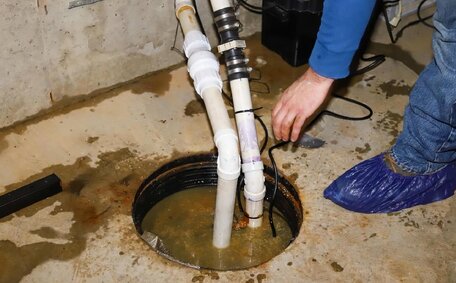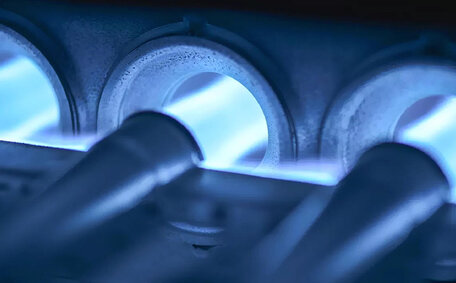Introduction to Hot Water System Drain Valves
The drain valve is a critical component positioned at the bottom of most hot water systems. Its primary function is to empty the tank for maintenance or repairs.
Addressing issues like faulty drain valves quickly can prevent the inconvenience of having no hot water and avoid significant future problems. Common problems include the valve failing to seal completely, causing a small leak, or becoming stuck due to mineral buildup and being unable to open fully to drain the tank.
Generally, you can straightforwardly replace or repair a faulty drain valve.
However, make sure safety is your number one priority when working with hot water systems. For complex concerns or doubts, always consider engaging professional help from qualified tradespeople, like Paddington Plumbing.
Common Drain Valve Leak Issues
Over time, electric hot water system drain valves may leak as internal components wear out. The most common sources of leaks include:
- Worn or damaged valve seats which allow water to seep through when the valve is supposed to be closed
- Cracked or perished valve stem seals
- Loose valve body fittings
Sediment buildup in your water heater can cause problems with drain valves not sealing properly. Mineral deposits and corrosion erode the valve surfaces, hindering a tight seal.
Water quality in certain areas can predispose heaters to faster sediment accumulation. Paddington Plumbing recommends flushing your hot water system annually in accordance with manufacturer guidelines to clear out any debris and ensure optimal performance.
Unchecked water leaks from the drain valve can escalate into major concerns, with drips onto electrical components presenting safety hazards. On noticing any leakage, we recommend seeking immediate professional repair or replacement services from qualified tradespeople.
Worn-out Gaskets Causing Leaks
Gaskets are vital in maintaining a leak-proof seal in drain valves. Yet, over time, these rubber or neoprene gaskets degrade.
Leaks from the drain valve caused by worn gaskets can be identified by signs such as:
- Water drips from the valve when the system is full and pressurised
- The leakage halts as the system cools and pressure decreases
- Cracks, splits, or deformations visible on the gasket
To determine whether a leak stems from a faulty gasket:
- Disconnect the power and shut off the water supply
- Release system pressure by opening a hot water tap
- Dismantle the valve cap and components to reach the gasket
- Examine the gasket for any damage
- If the gasket is worn or defective, replace it to restore the seal
Sediment Buildup Preventing Proper Sealing
Over time, sediment from hard water can accumulate inside your electric hot tank and cause problems with components like drain valves. When mineral deposits build up on the electric water heater valve surfaces, they prevent the valve from fully closing which leads to leaks.
Flushing your hot water system annually helps remove sediment to ensure all components are working properly and prevent issues like drain valve leaks. As per manufacturer guidelines, this involves:
- Shut off power to the hot water unit
- Connecting a hose to the drain valve spigot
- Opening the valve to release water flow and flush tank
- Draining 5-10 gallons initially to remove loose sediment
- Partially closing valve to restrict flow for remainder of flush
- Running clean water through for several more minutes
- Closing valve fully once water runs clear
For significant sediment buildup, detach the heating elements from your water system before flushing to prevent damage. Paddington Plumbing offers full hot water system flush services - contact us to book an appointment.
DIY Troubleshooting of Minor Drain Valve Leaks
For small drips or leaks from the drain valve that pose no safety risks or damage, DIY troubleshooting may resolve the issue before requiring professional assistance:
- Verify the water supply is turned on fully to keep the hot water working and all taps are closed.
- Check the hot water system power supply and circuit breaker.
- For gas systems, ensure the pilot light is lit.
- Raise the thermostat above the water temperature to engage heating.
- Open a hot tap nearby and see if the water flowing out is unobstructed and flows freely.
- Flush the water heater per the manufacturer’s instructions to clear sediment.
- Tighten any loose valve body bolts or fittings.
- Drain the system then inspect the valve internally for debris obstructing closure.
If there no resolution to the minor leak persists despite troubleshooting, discontinue DIY repairs. Contact licenced professionals like Paddington Plumbing to prevent safety hazards or scalding risks.
Fixing a Dripping Drain Valve
A dripping or leaking drain valve requires prompt attention to prevent bigger problems. Start by troubleshooting power supply and thermostat issues as outlined earlier. For persistent minor leaks:
- Turn off the power and water supply.
- Open a hot tap to depressurize the system.
- Unscrew the valve cap and detach any hoses or fittings.
- Inspect valve components like gaskets for wear and sediment buildup.
- Clean or replace damaged parts if possible.
- Reassemble ensuring proper tightness on all fittings.
If leaks continue despite replacing worn gaskets or clearing debris, the drain valve your assembly may need professional replacement.
Paddington Plumbing offers full drain valve repair or replacement services. Email or call to schedule an appointment with our qualified technicians if persistent valve leaks pose safety hazards or cause property damage.
Replacing a Faulty Drain Valve
Upgrading a troublesome plastic drain valve to a brass one can enhance reliability and prevent recurring issues. Here are the steps to replace your hot water system’s drain valve:
- Turn off power and water supply, and open a hot tap to depressurize the system
- Detach any fittings connected to the drain valve
- Unscrew the valve body from the tank spigot
- Clean spigot thoroughly and apply thread tape
- Install new brass drain valve, ensuring proper thread engagement
- Reattach any previous fittings and hoses
- Restore water supply and power, check for leaks
Brass drain valves withstand corrosion and sediment buildup better than plastic models. Installing a higher quality replacement valve improves longevity and prevents recurring leaks.
For comprehensive drain valve replacements in your hot water system, trust the expertise of licenced professionals. Email or call us to book an appointment.
When to Call a Professional Plumber
There are a few key signs that indicate it’s time to call in a professional plumber to address drain valve issues:
- You have done all applicable troubleshooting steps but the leak persists
- The leak is large or causing substantial property damage
- You lack the skills, tools or expertise to safely make internal repairs
- Replacing damaged components like gaskets hasn’t resolved the leak
- There are risks of scalding from steam or hot water exposure
Our team at Paddington Plumbing has the technical know-how to properly diagnose problems and undertake drain valve repairs or full replacements. We offer these services for all hot water systems.
For the safety of yourself and your family, trust professionals for any complex issues with your gas water heaters. Email or call Paddington Plumbing to schedule an appointment today.
Repairing Leaks from Corroded Valves
Corrosion damage can lead to leaks from drain valves or other components. These leaks should be addressed immediately as the resulting spray or moisture contact greatly increases the corrosion rate. Over time, unchecked corrosion leaks pose substantial safety hazards and property damage risks.
Initially, corrosion leaks may seem minor but can quickly escalate as surfaces erode further. Spray patterns also spread moisture across larger areas, multiplying damage.
Temporary measures such as using sealants or tightening corrosion-prone components can provide only short-lived solutions before problems arise again. The proper course of action for maintaining a gas hot water system is to replace old, corroded fittings and valves with new stainless steel or brass alternatives that are resistant to corrosion.
For severe corrosion leaks in your electric gas water system, full re-piping may be necessary. Paddington Plumbing has accredited technicians to handle all corrosion-related issues. We caution against DIY repairs as further component damage or safety issues involving electricity and hot water can quickly arise.
Contact our team today to schedule an inspection and repair appointment for any leaks or corrosion present on your hot water system’s drain valve or other components. Catching damage early is key to prevent escalating problems down the track.
Replacing Defective Water Heater Components
Several components within hot water systems can become defective over time and contribute to issues with the heater drain valve or overall performance. Being able to identify faults allows preventative repairs or replacements to avoid larger problems.
Key components to check include:
- Heating Element – Mineral buildup diminishes efficiency and could result in failure. Replacement can extend the lifespan of the water heater.
- Thermostats – Faulty thermostats can lead to inconsistent water temperature. Consider upgrading to a digital thermostat for more accurate temperature control.
- Anode Rods – Depleted anode rods can accelerate tank corrosion. Timely replacement can help prevent leaks.
- Pressure Relief Valves – Malfunctioning valves may result in drips. Swapping with models compliant with safety standards mitigates scalding risks.
- Dip Tubes – Cracked dip tubes can cause hot and cold water to mix, affecting temperature levels. Replacing them ensures the system functions at the correct temperature.
For repairs involving gas electric or plumbing work, trust our licenced Paddington Plumbing technicians for safety and compliance. Email or call us to diagnose your hot water system issues.
Ensuring Gas Water Heater Safety
Ensuring safety is paramount when servicing water heating systems. If at any point a natural gas smell is detected, or if your pilot light goes out, immediately evacuate the area and contact emergency services. Do not turn any switches or operate appliances.
If the flame goes out or diminishes, a safety lockout may occur preventing appliance operation until manually reset.
Pilot light lit should burn bright blue at all times. Try relighting 2-3 times before seeking professional assistance. Its presence indicates all fuel lines are intact without leaks. In gas systems, maintaining a correctly functioning pilot light is essential for safety.
It’s crucial to set water heaters to approximately 60°C to inhibit Legionella bacteria growth, while also being cautious not to set the temperature so low as to increase health risks or so high as to create scalding hazards. Temperatures set too high increase hazards without additional benefits.






